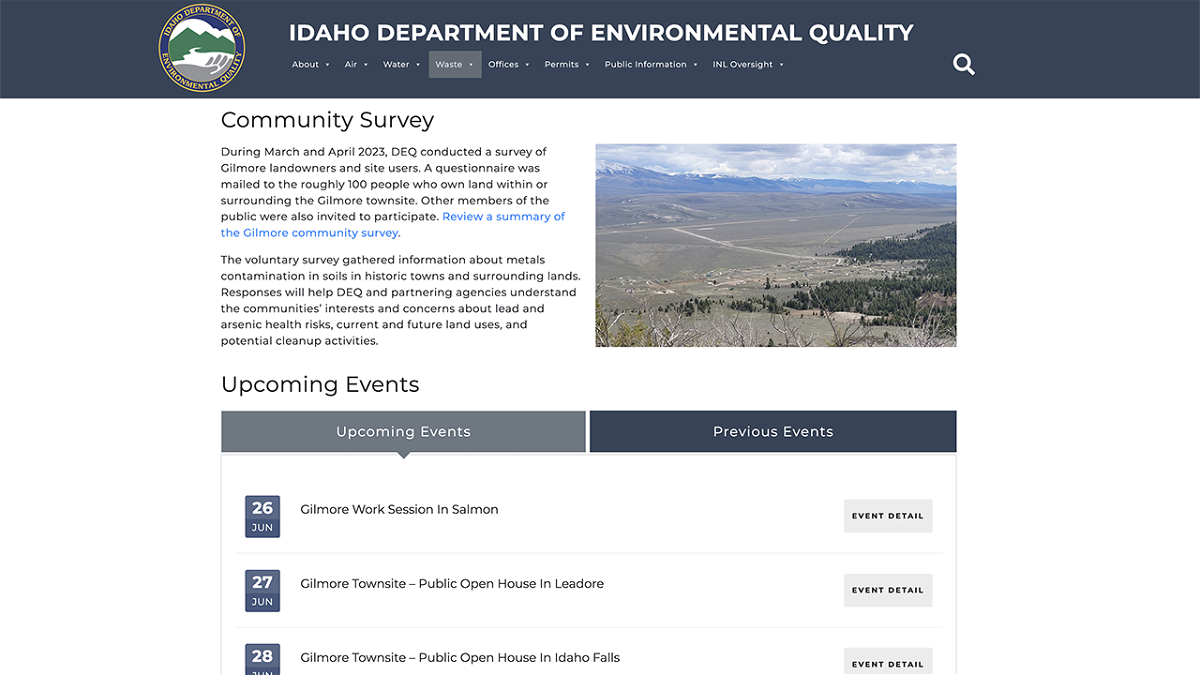Gilmore townsite health-risk information released, public meetings scheduled

LEMHI COUNTY, Idaho (KIFI) — The Agency for Toxic Substances and Disease Registry (ATSDR) and partner agencies will provide newly available information about the presence of lead contamination at the Gilmore townsite in Lemhi County during two public open house meetings in Leadore and Idaho Falls the week of June 26, 2023.
The preliminary ATSDR health consultation report concluded the Gilmore townsite has high levels of lead in surface soil. Children, pregnant women, and adults living in or visiting the townsite multiple times a year are exposed to lead at levels that can cause harm. Regular or intermittent exposure to contaminated soil of as little as one day per week for 13 weeks could pose a significant health risk.
In response to the health consultation report, the Idaho Department of Environmental Quality (DEQ) and the Idaho Department of Health and Welfare (DHW) are working together to inform those who live in and visit the townsite and surrounding area about the report and risk of exposure. Together they are working with local and government leaders on short-term and long-term actions for the townsite. The public’s engagement and feedback is valuable and encouraged.
Public meetings with the Lemhi County Commission and a public open house will take place June 26, 27, and 28 in Salmon, Leadore, and Idaho Falls, respectively. For more information, please visit www.deq.idaho.gov/gilmore for specific locations, dates and times.
In addition, during March and April 2023, DEQ conducted a survey of Gilmore landowners and site users. A questionnaire was mailed to roughly 100 people who own land within or surrounding the Gilmore townsite. Other members of the public were also invited to participate. A summary of survey responses is available on DEQ’s website at www.deq.idaho.gov/gilmore and will be available at the open house meetings. To request a printed copy, contact Kevin Kostka at 208-515-6696 or email kevin.kostka@deq.idaho.gov.
About Gilmore:
- Lead contamination at Gilmore is the result of historic large-scale hard rock mining operations and wind and water erosion of mining waste. The mines on the hillsides above Gilmore operated in the early 1900s and primarily produced lead and silver ore. During the early years, processed ore was hauled more than 80 miles via wagons pulled by horses or a steam-powered tractor. Later, ore was transported off the hillside by a half-mile long tramway that travelled through the townsite before emptying into waiting railroad cars.
- High concentrations of lead in the soil at the Gilmore townsite were found during DEQ sampling events in 2016 and 2017. At some locations, lead soil levels are more than 50 times greater than what is considered safe for residential areas. As a result of these sampling events, DHW requested the ATSDR complete an evaluation, resulting in the ATSDR health consultation report. This report will be posted to ATSDR’s website on June 26, 2023.






